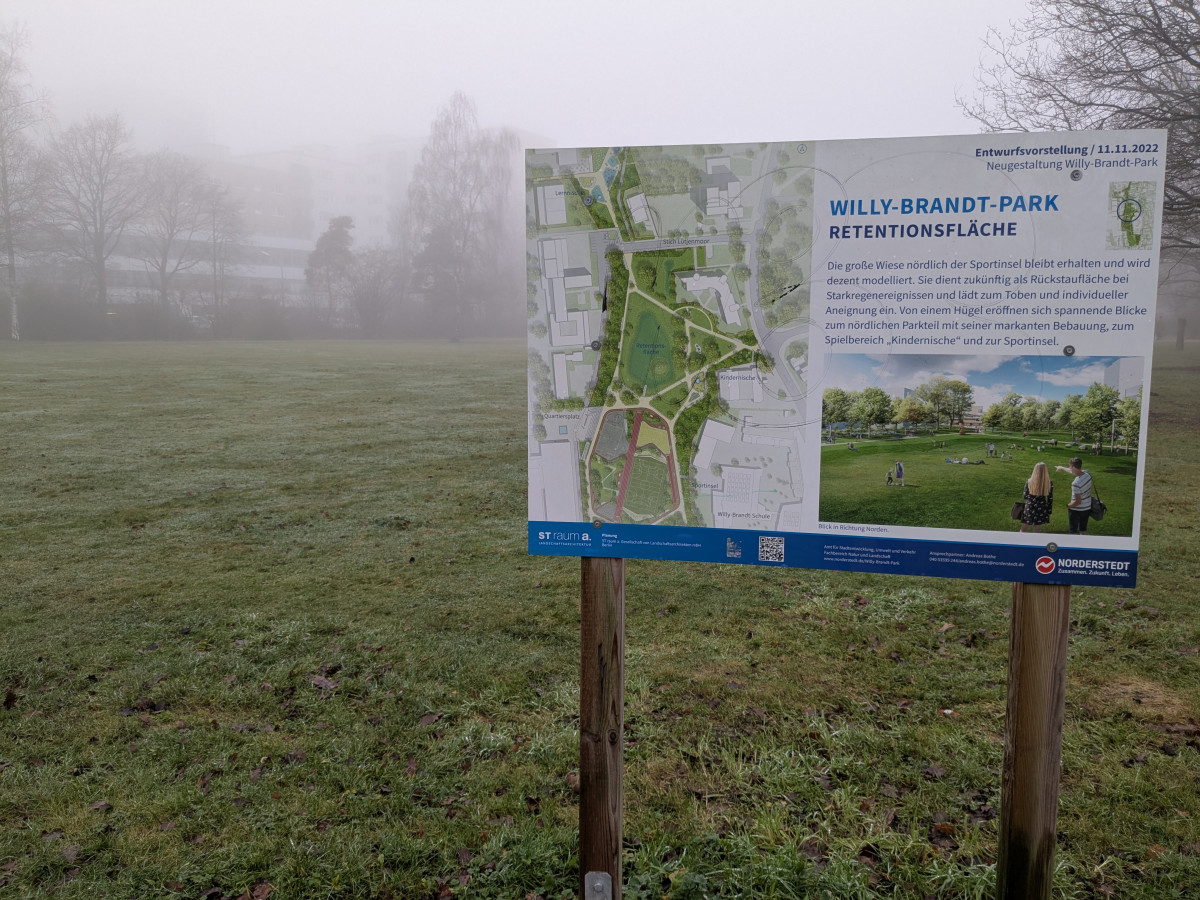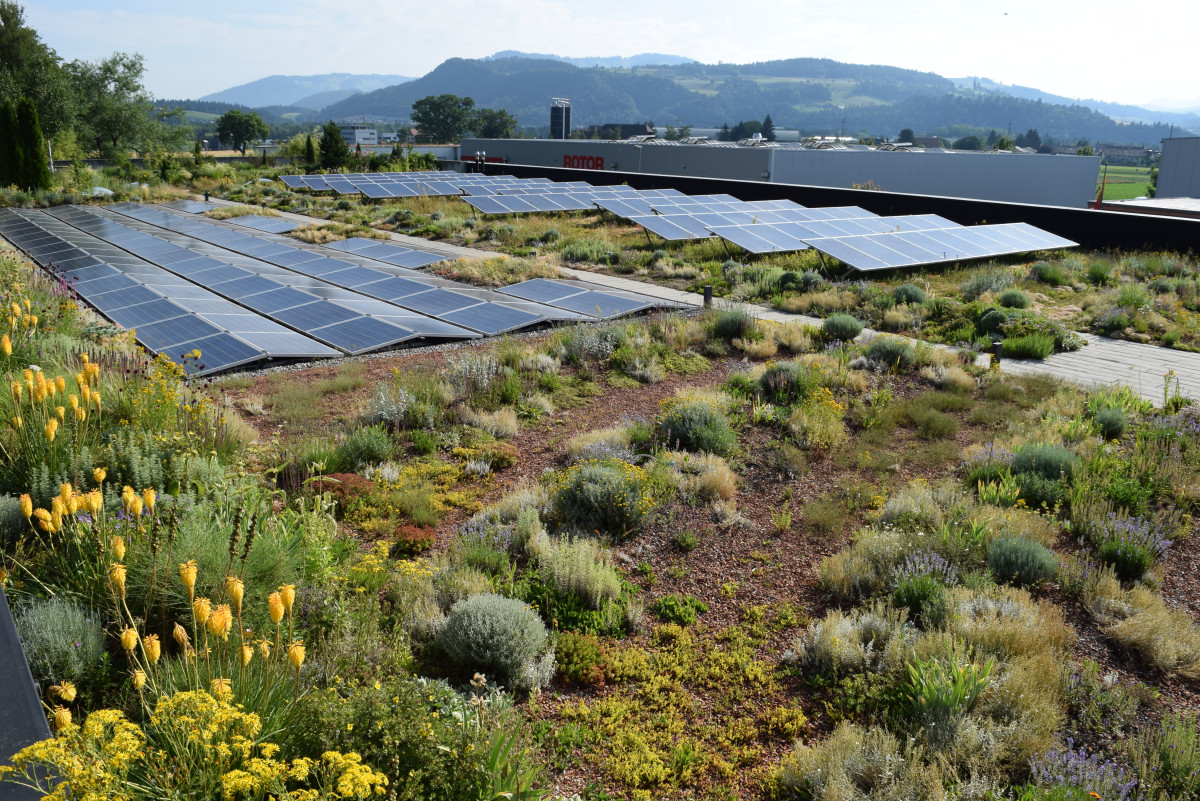Lack of skilled workers could delay climate-proofing Europe’s homes and cities
Content
- Europe must step up to climate-proof its cities
- Skills shortage could jeopardise climate adaptation
- Impact of climate adaptation has yet to emerge as issue for construction sector
- “Not rocket science”
- Roofers at the forefront
- State policies to promote and mandate climate adaptation
- Support from outside the country
When devastating floods hit the Spanish coastal city of Valencia in October 2024, hundreds of people died, entire buildings collapsed, and bridges and roads were destroyed. It did not take long for climate scientists and researchers to point out two things: first, that the heavy rainfall that caused the flooding was significantly more likely and intense due to human-induced climate change.
And second, that Europe is not yet prepared to deal with the effects of global warming – as shown by insufficient early warning systems, and the inability of modern infrastructure to cope with extreme flooding events.
Buildings are made to protect people but, for many in Europe, adaptation to climate change remains an afterthought, even as its effects are felt across the continent. The construction industry is no exception. Europe’s need to make its buildings, bridges, or drainage systems more resilient to the impacts of climate change will require the right workforce in the construction sector, which is already suffering from a severe skill shortage.
“Climate change adaptation is going to become an important topic for us as an association, but it is not today,” says Anne-Caroline Erbstößer, sustainability consultant at the Main Association of the German Construction Industry. Through regional chapters, the association represents the largest companies in the industry, as well as bigger SMEs.
“At the moment, we are focusing on low-emission and sustainable construction; so climate mitigation, not adaptation,” she says.
Until recently, the climate impact of construction was not a focus of Europe's efforts to make its buildings climate-friendly. The issue of heating emissions has largely grabbed all the attention, but the emissions that arise before a building is even in use are only slowly being pushed into the spotlight.
The impact of climate adaptation on the construction sector, however, is still waiting in the wings.
Cities and communities across the globe increasingly adapt to the changes. Extreme examples include Indonesia moving its capital Jakarta more than 1,000 kilometres away from its current location at the coast. The city, built on swampy ground, is sinking due to excessive drinking water extraction. Climate change-driven sea water rises are exacerbating the danger. The relocation would increase total construction work done in the country by 8.5 percent annually until 2028, said consultancy Oxford Economics.
There will be a considerable need for additional workers in certain occupational groups, especially in the construction sector.
Germany is unlikely to have to relocate a metropolis in the foreseeable future but, like the rest of Europe, it is ill-prepared for many of the unavoidable effects of climate change in the country.
“Climate change requires effort, and much more effort than we put in today,” says Florian Bernardt. The senior researcher at the Institute of Economic Structures Research (GWS) took a first stab at finding out how climate adaptation affects the labour market in Germany. The findings of the report, which was co-authored with his colleague Friederike Rausch-Berhie – a research associate at the Federal Institute for Vocational Education and Training (BIBB), show the construction sector is particularly affected.
“If climate adaptation is actually implemented as we presume in our report, then there will be a considerable need for additional workers in certain occupational groups, especially in the construction sector,” Bernardt told Clean Energy Wire.
Europe must step up to climate-proof its cities
Europe – a continent known for its historic towns and regions – has an old building stock, with about a third of them constructed before the first energy efficiency policies were introduced in the 1970s in response to an oil crisis. Long before anyone thought about adapting to human-made climate change.
Key climate risks to the built environment in Europe are damage to infrastructure and buildings themselves, as well as risks to people’s wellbeing from climate change impacts on buildings, says the European Environment Agency’s (EEA) European Climate Risk Assessment (EUCRA) report. Damage from extreme weather events to homes, commercial or public buildings, transport or energy infrastructure, and coastal zone protection structures is projected to increase up to 10-fold by the end of the 21st century purely as a result of climate change.
. Graphs shows climate change impact chain on the built environment. Source: ETC CA / EEA.](https://www.cleanenergywire.org/sites/default/files/styles/paragraph_text_image/public/paragraphs/images/etc-ca-eea-climate-change-impact-chain-built-environment-european-climate-risk-assessment-report.jpg?itok=Q8cUGZNF)
That means new and existing buildings must be made climate-proof. Spatial planning must become more sustainable, as must drainage systems. Green roofs and facades absorb rainwater and help cool buildings and improve air quality.
The exact measures can vary depending on the location across Germany or Europe. Flooding is a bigger concern for western European cities, while southern areas are more exposed to droughts. Cities in northern Europe were designed for colder temperatures but may now need to adapt to withstand heatwaves.
A tremendous amount of work will be generated by that retrofit.
“Cities have started the discussions on how to adapt to climate change, but things are not happening fast enough to cope with what is coming – we saw that in Valencia, for example,” says Simone Mangili, executive director at the Carbon Neutral Cities Alliance (CNCA), a global group of frontrunner cities working together to achieve a successful climate transformation.
Most buildings – from schools to hospitals to private homes – may need to be built differently because of extreme heat, and a lot of existing buildings must be retrofitted, says Mangili. That requires skilled labour.
“A tremendous amount of work will be generated by that retrofit,” he says.
Skills shortage could jeopardise climate adaptation
There is ample research on construction sector jobs and the transition to a climate-friendly economy. In a flagship report from 2018, the International Labour Organisation (ILO) said the green transition would lead to 6.5 million additional jobs in the construction sector by 2030, by far the highest absolute number for any industry.
However, like so many others, the report focuses on climate change mitigation. The 6.5 million jobs would be created through efforts to retrofit buildings to achieve efficiency gains – not through making buildings more resilient.
“In recent years, a wide range of studies have been published examining the effects of climate protection measures on labour markets,” says Frederik Moch, who heads the department for structural, industrial and services policy at the German Trade Union Association (DGB). “There have been far fewer studies on climate adaptation measures.” These have so far suggested that there will be an additional need for skilled workers, particularly in the construction and renovation sectors and in medical and health professions, he says.
One such pioneering project is by researchers Bernardt and Rausch-Berhie, which was commissioned by the Federal Environment Agency (UBA). Their model looks only at adaptation measures that can be implemented in all cities in Germany in the mid-term (by 2040), such as greening roofs and facades. It does not consider measures with a more local focus, such as coastal protection.
The report published last year found that, by 2027, around 70,000 more workers would be needed if climate adaptation took place as presumed – with around one fifth of the new demand in the construction sector.
The figure is small in comparison to the 6.5 million workers needed worldwide for the green transition from the ILO report. However, it is only for Germany, and “we only looked at a certain number of adaptation measures,” says Bernardt. “For comprehensive climate change adaptation, much more is needed.”
To make things more challenging, it is precisely these jobs for which finding suitable candidates presents an especially high hurdle. According to the two researchers’ model, the average time businesses will need to find a new worker in these fields– a key indicator for a skills shortage – exceeds 90 days in 2040. The report expects the greatest bottleneck for jobs in ‘construction planning and supervision, architecture’ - with 112 days needed to find the right person for the job.
“A lack of knowledge and skills in relevant sectors and their businesses could jeopardise the implementation of climate adaptation measures with small and medium-sized enterprises facing particular challenges,” write Rausch-Berhie and Bernardt.
Impact of climate adaptation has yet to emerge as issue for construction sector
Until now, climate change adaptation has largely been seen as a workers’ health or workers’ rights issue in the construction sector.
“The effects of climate change are becoming increasingly noticeable in the workplace in Germany,” says DGB’s Moch. “This applies first and foremost to employees who work outdoors, and unions are increasingly taking this into account in collective agreements.” For example, the construction industry trade union IG BAU has negotiated a "loss allowance" for roofers that is paid as wage compensation if roof work cannot be carried out due to heat, says Moch.
Otherwise, the discussion around adaptation in construction is still very much in its infancy.
“If I’m being very honest, this is a discussion that needs to take place more within the sector,” said Noura Tantawy, a public affairs senior manager at building material producer Holcim on a panel organised by the International Labour Organisation at this year’s UN climate change conference COP29 in Azerbaijan. “We collaborate a lot with many partners in the whole value chain, reaching from architects to end users. We are talking a lot about decarbonisation, now more about circularity, we are full in on nature, but we need to bring this to the table more and more, and I think it is not yet sufficient.”
A lack of information and finance are key reasons for this, says Anne-Caroline Erbstößer from the German construction industry association.
“We, as the construction industry, depend on our customers to tell us what is needed – so that would be cities, municipalities, or local utilities,” she says. “However, the problem is that there is too little data on future construction needs, whether it’s regarding water management systems, or the needs to renovate buildings to make them more climate-resilient.”
Costs represent another hurdle for more resilient construction, using the right materials, according to Erbstößer.
“Do we build our infrastructure in a way that it can withstand historic flooding? Our customers must decide whether they have the funds to really build in a climate-resilient way. Our companies can certainly do it.”
“Not rocket science”
Finding the additional construction workers needed for adaptation measures will be a hard nut to crack for an industry already faced with severe labour shortages.
Providing them with the right skillset, however, may be simpler.
In a way, the construction sector is somewhat better prepared for climate change adaptation than it has been in its efforts to reduce emissions, CNCA’s Mangili says. “Differently from the mitigation space – where re-skilling or upskilling is potentially more challenging given all the new technologies – in adaptation we see less technological innovation.” In most cases, climate adaptation involved nature-based interventions on changing the surfaces of public spaces or right of ways – such as planting more trees or using more permeable pavements like permeable cement or asphalt – which generally “do not require a major shift in skills and knowledge,” Mangili says.
Erbstößer agrees: “Certain adaptation measures – such as preparing a rooftop in a way that it can be turned into a green roof – are not rocket science. All of this is already available today, both in terms of materials and construction methods.”
Climate adaptation is definitely already a key topic for us, as we play an important role by building green roofs and water retention roofs especially in cities.
Roofers at the forefront
One profession is a few steps ahead of others in adjusting to the needs of climate adaptation in Europe: roofers.
“Climate adaptation is definitely already a key topic for us, as we play an important role by building green roofs and water retention roofs, especially in cities,” says Rolf Fuhrmann, deputy managing director of the Central Association of the German Roofing Trade (ZVDH). He says there is a lot of demand, even today, as more and more city development plans mandate green roofs.
Fuhrmann said training for additional skills is needed because greening requires in-depth knowledge of the roof structure, statics and building physics. The same is true if the goal is retaining rainwater on the roof, where traditionally it was important to drain it as fast as possible, he told Clean Energy Wire.
Germany’s famed dual vocational education and training (VET) system, with its unique combination of practical and theoretical training, put the country in a good position to tackle the challenges which climate adaptation presents for the construction sector, says DGB’s Moch.
In the VET system, an apprentice is employed by a company and receives on-the-job training, while also visiting classes in a vocational school. The system ensures that necessary adjustments to job profiles or curricula can be identified and implemented quickly and in a practical manner.
Roofer association ZVDH’s Fuhrmann explains that, as part of an apprenticeship in a company, trainees not only have on-the-job training and learn the theory in a vocational school, but also visit practical courses in special roofer training facilities. “Even if a small business does not focus on green roofs or water retention roofs, its apprentices will learn the relevant skills,” he says.
 in Hamburg received a make-over in 2024 to include a green roof with more water retention areas. Source: Bundesverband GebäudeGrün. Photo shows Green Bunker in Hamburg, Germany. Source: Bundesverband GebäudeGrün.](https://www.cleanenergywire.org/sites/default/files/styles/paragraph_text_image/public/paragraphs/images/bundesverband-gebaudegrun-bunker-hh.jpg?itok=x02w6FcO)
State policies to promote and mandate climate adaptation
Through building regulations, standards, public procurement and adaptation policies, member states and EU institutions have significant influence over how well Europe is prepared for worsening climate change.
Examples include the EU Energy Performance of Buildings Directive, which features provisions on adaptation and resilience in renovation and new buildings; and the Eurocodes – a series of European standards which provide a common approach for the design of buildings and other civil engineering works and construction products.
Many policies, rules and regulations are decided at the national level. European countries have many safety and quality standards dictating how homes should be built, all the way from fire protection through to noise protection. However, many of these regulations are outdated and inadequate to deal with worsening climate risks, a report by engineering firm Hauser (IBH) found.
At the end of 2024 the German government adopted a climate adaptation strategy which includes measures across sectors. In the building sector, it proposes steps such as improving data availability on climate risks for buildings, and construction standards that better consider adaptation, as well as support innovation and research in the area. The government calls on states and municipalities to reform building regulations to help adapt to climate change.
As one of only few hints on what adaptation efforts mean for workers in the sector, it also calls on construction businesses and associations to provide additional training on climate adaptation measures. It also addresses the education system. “In order to counteract the shortage of skilled workers, colleges and universities - as well as further education centres run by associations and chambers - should focus more on teaching, training and further education on preventive construction measures and the adaptation of buildings,” it says.
Support from outside the country
Germany’s construction sector is already very dependent on workers from outside the country.
The government has started to focus its efforts on labour migration, as the country’s ageing society exacerbates the skills shortage. One example is the recently presented skilled labour strategy on India.
It says that, in addition to the healthcare sector, qualified workers and apprentices are in increasingly short supply in construction and skilled crafts. The strategy highlights decarbonisation as a key challenge and does not mention the need to adapt to climate change effects. Still, however different the lives and economies might be, the experiences of people in India as one of the most climate-vulnerable regions in the world could hold valuable lessons and expertise for Europe.
“We definitely need more skilled labour for climate adaptation measures,” says the roofer association’s Fuhrmann. While craft businesses overall face a skills shortage today, roofers have seen a steady increase in apprentices in recent years, partlydue to increased efforts to advertise working in the sector.
However, this would not nearly be enough, says Fuhrmann. “We can’t rest on our laurels just yet.”
Efforts would certainly include recruiting people from other countries, he says. “We are now in talks about supporting projects to actually bring people from abroad to us and give them a chance in the roofing trade.”
This article was produced as part of the COP29 Cross-Border Energy Transition Reporting Fellowship, a programme organised by Clean Energy Wire and the Stanley Center for Peace and Security.




